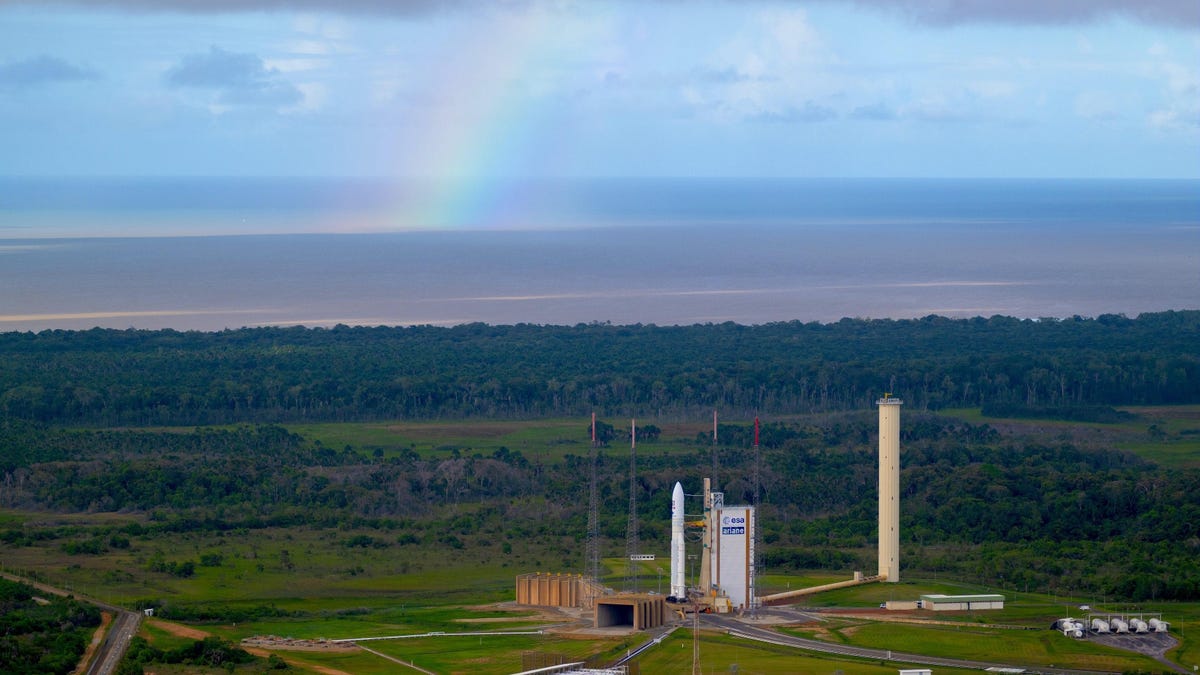An Ariane 5 rocket, the last used for an ESA mission, is ready to launch the Juice probe from Europe’s Kourou space base in French Guiana. Short for juice Jupiter IC Moons ExplorerThe largest space shuttle in Europe’s history will be carried out Today Tomorrow is an ambitious science mission to explore Jupiter and its moons.
Specifically, JUICE will observe the gas planet and its three large ocean moons, Callisto, Europa and Ganymede, using 10 science instruments, an experiment and a radiation monitor.
It will be the first spacecraft to orbit a moon other than the Moon: Ganymede, the ninth largest object in the Solar System (behind Mars, and ahead of Titan and Mercury). Ganymede has an internal ocean that can hold more water than all the oceans on Earth, but liquid water spreads between the ice sheets and does not come in contact with the surface, making Europa (the best candidate for life) .
During the long and complicated journey to Jupiter, the juice will provide several gravitational aids. A year and four months after launch, it became the first spacecraft to perform a Moon-Earth gravity assist. Another year later, he will make another favor with Venus. Another with Earth, 13 months later, in September 2026. In January 2029, it will make its final gravitational pull to Earth, arriving at Jupiter in July 2031. Over three years, Zeus will tour the ocean moons, orbiting Ganymede between December 2034 and September 2035.
JUICE will carry cameras, sensors to study the chemical composition of the moons’ icy crusts, and magnetometers and radars to create detailed maps of the moons’ surfaces and, for the first time, peer beneath them. It will also study Jupiter, measuring wind speeds and temperatures in the gas giant’s atmosphere and determining the chemical composition of parts of the planet’s atmosphere with greater precision than ever before.
ESA hopes the extract data will help scientists understand what are visible light and dark bands in Jupiter’s atmosphere, which vary in opacity and extend from the equator to the poles.
Instead of a radioisotope thermoelectric generator (RTG), Juice will use solar panels to generate its power. Because Jupiter’s distance from the Sun is five times greater than Earth’s, these panels are huge enough to collect a lot of light: 85 square meters and with a striking cross-shaped design. Additionally, the spacecraft will have shields to protect its instruments and electronics from the intense radiation environment reflected by Jupiter.
UPDATE 04/13/2023 14:27 CEST: Arianespace has delayed tomorrow’s launch due to the risk of lightning strikes.
Direct output from ESA’s JUICE study
Juice is scheduled to launch on April 14
- 08:14 am Washington, DC time
- 09:14 am Kourou time
- 12:14 pm UTC
- 02:14 pm Paris time
- 12:14 a.m. Tokyo time (April 15)
You can follow him That TV And Social websites From ESA.





